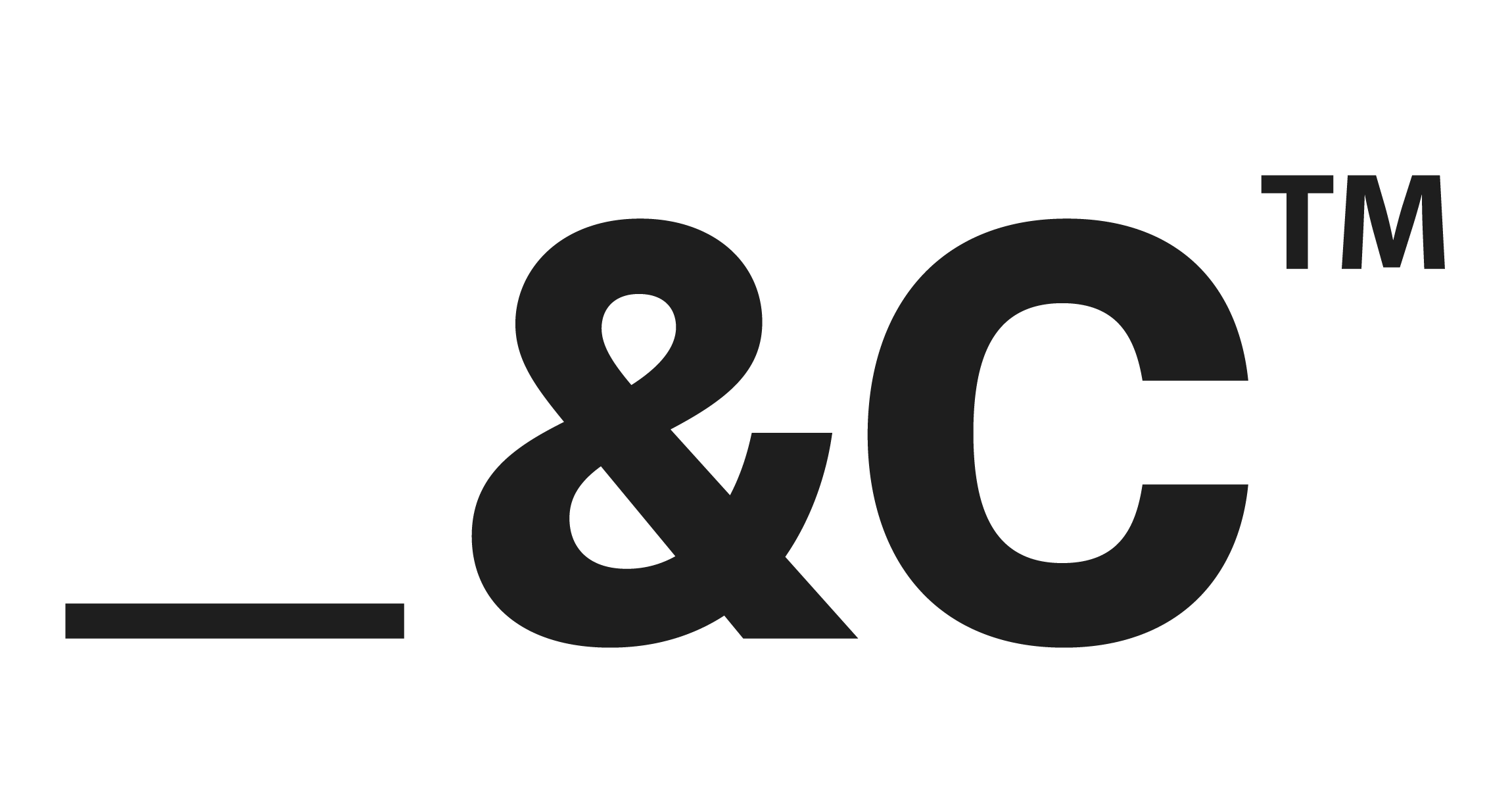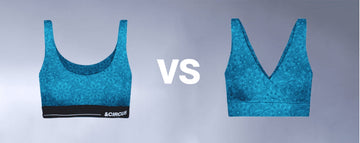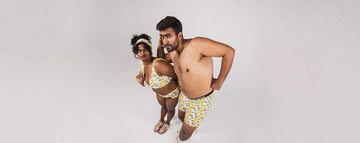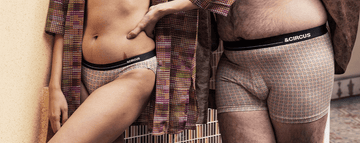Quick Listen:
Imagine threading your way through the throng of Times Square at rush hour, the summer heat pressing in like an uninvited guest, your shirt turning into a second skin. But then, a subtle shift: the fabric breathes, pulling the dampness away, leaving you sharp and unfazed. This isn't some distant tech promise it's the quiet revolution of moisture-wicking fabrics, reshaping how city dwellers armor themselves against the urban assault.
In a piece exploring how these innovations dovetail with sustainable style, Moisture-Wicking Fabrics: The Urban Essential for Comfort and Sustainability delves into the fabrics fueling eco-conscious wardrobes. How are brands harnessing this technology to blend performance with planet-friendly ethos, all while catering to the ceaseless rhythm of metropolitan life?
Uncomfortable underwear shouldn't steal your confidence. At Andcircus, we craft ultra-soft, sustainable Lenzing Modal Micro® innerwear for every body, XS to 5XL. From briefs to bras, our custom packs fit you perfectly. Shop risk-free with our 100% satisfaction guarantee and embrace comfort that includes everyone. #LoveEveryBody. Shop Now!
Embracing the Urban Lifestyle
City existence demands versatility from our clothes. One hour you're powering through a spin class in a high-rise gym; the next, you're sealing deals in a glass-walled boardroom. Sweat sneaks in unannounced, but moisture-wicking fabrics stand guard, channeling perspiration from skin to surface for swift evaporation. They don't just dry you out they stabilize your core temperature, turning potential discomfort into seamless flow.
For pioneers like AndCircus, this tech aligns seamlessly with their mission of inclusive, earth-honoring apparel. Their collections prioritize pieces that hug diverse forms while sipping resources sparingly, ideal for urbanites who refuse to choose between ease and ethics. Underwear that stays fresh during marathon meetings, loungewear primed for impromptu park picnics these aren't novelties; they're necessities in a wardrobe tuned to tomorrow.
The surge in adoption mirrors broader shifts. As moisture wicking fabrics market size clocked in at $2.82 billion last year, analysts forecast a climb to $3.01 billion this year alone, propelled by a 6.7% compound annual growth rate. Looking further, that trajectory holds steady, eyeing $3.86 billion by 2029 with a consistent 6.4% CAGR. These figures capture a sector maturing amid global flux, where fabrics not only wick moisture but also empower wearers to thrive in motion, fostering connections to activity and the outdoors.
Yet numbers only hint at the human pulse. In sprawling metros from New York to Tokyo, professionals and parents alike crave attire that anticipates the day's unpredictability. AndCircus taps this vein, crafting from recycled threads that perform without penance to the planet. It's a subtle rebellion against throwaway trends, one stitch at a time.
Emerging Trends: The Rise of Moisture-Wicking Technology
At its core, moisture-wicking tech mimics nature's efficiency capillaries in the material ferry sweat outward, where air currents whisk it away. No more sodden collars or clammy cuffs; instead, a persistent poise that lets you pivot from desk to dash without pause. Urban scenarios amplify this edge: think humid subways or rooftop happy hours, where staying composed isn't optional.
The sustainability angle elevates it further. Forward-thinking makers now favor natural fibers bamboo's silky draw, wool's resilient pull or recycled synthetics that sidestep virgin plastics. This pivot isn't mere marketing; it's a response to mounting calls for attire that treads lightly on ecosystems. Consumers in dense urban cores, squeezed between concrete and conscience, gravitate toward these hybrids, demanding function laced with foresight.
Data underscores the momentum. The sector, segmented across natural fibers, synthetic fibers, and blended fabrics, eyes expansion through 2032, with applications spanning activewear to fashion. Valued at $4.16 billion in 2024, it's slated to hit $5.09 billion by decade's end, growing at 4.1% annually from next year. Fitness fervor and outdoor pursuits stoke this fire, alongside leaps in fabric engineering lighter weaves, antimicrobial infusions that heighten breathability and speed drying.
Eco-innovations steal the spotlight. Organic cotton variants and bamboo derivations now rival old-guard polyesters, offering guilt-free wicking. In automotive realms, they're weaving into seat covers for ventilated luxury; in healthcare, they line scrubs that soothe rather than stifle. For urban fashionistas, athleisure lines fuse these into sleek silhouettes, blurring lines between gym and gallery. It's a tapestry of progress, where every thread whispers adaptability.
Globe-spanning trends add layers. Asia-Pacific commands the lion's share, its manufacturing hubs churning out volumes that feed worldwide appetites. Meanwhile, Western markets prioritize premium, traceable sources think certifications for low-water dyes. These currents converge in cities, where diverse demographics demand fabrics that honor heritage while hugging the horizon.
Real-World Applications and Case Studies
AndCircus embodies this fusion, embedding wicking prowess into their core lineup. Their eco-loungewear, born from blended recyclables, manages humidity with finesse, suiting everything from remote work marathons to midnight strolls. Inclusive cuts ensure no one feels sidelined, while ethical mills guarantee the chain from spool to shelf stays clean.
Beyond their blueprint, the field brims with exemplars. Sportswear giants have unveiled recycled wicking collections, merging green creds with elite ergonomics. One standout: a January 2025 launch of ADPT fabric, boasting amplified breathability and all-day flex for urban athletes logging miles on pavement. Another milestone came in March 2024, when a UK firm partnered with graphene specialists to fortify fabrics bolstering durability and thermal control for everything from trail gear to tactical kit.
These moves yield tangible wins. In the U.S., outdoor engagement swelled to 168.1 million souls in 2022, a 2.3% uptick that cascades into apparel demands. Feedback loops glow with praise: users report heightened satisfaction, fewer laundry cycles, and a tactile trust that elevates daily grind to glide. Sales in activewear niches have spiked, particularly where sustainability seals the deal.
Healthcare horizons broaden the canvas. Polyester-led segments dominate, but bamboo and wool carve niches in therapeutic textiles. Wound dressings now leverage cooling evaporation to ease inflammation and hasten recovery; military dry-tech endures extremes without falter. Valued at $1.0 billion in 2023, the overall market charges toward $2.4 billion by 2034, at an 8.0% clip direct and indirect channels alike fueling the flow.
Collaborations cement credibility. AndCircus sources from vetted allies, tracing fibers back to regenerative farms. This transparency not only mitigates risks but magnetizes loyalists who vote with wallets for wholeness. In a fragmented fashion landscape, such alliances forge fortresses of trust.
Key Challenges and Limitations
Perfection eludes even the most advanced weaves. Durability dances a delicate tango with wicking repeated launderings can dull the draw, leaving fabrics lethargic. Urban warriors, who wring every ounce from their gear, spot these slips: pilling edges, faded resilience that shortens shelf life in a sustainability-driven era.
Price tags pose steeper hurdles. Premium eco-materials and meticulous processes inflate costs, gating access for budget-bound buyers. Mass adoption hinges on scaling without sacrifice affordable lines that don't dilute integrity remain the holy grail, especially as trade tariffs ripple through supply chains.
Perception gaps linger, too. Not all city slickers grasp wicking's green underbelly; it risks blending into the buzz of buzzwords. Education efforts vibrant demos, myth-busting tags must illuminate without overwhelming. Brands like AndCircus counter with storytelling: vivid vignettes of bamboo's bounty, recycled poly's pluck, turning specs into sagas that stick.
Global headwinds compound these. Shifting tariffs, as noted in recent outlooks, jolt forecasts, demanding agile sourcing. Yet these frictions forge resilience, pushing innovators to localize and diversify.
Opportunities and Business Impact
Urban appetites herald vast vistas. With heat stress awareness rising and athleisure ascendant, wicking fabrics poise brands to capture health-hungry cohorts millennials layering workouts over workflows, Gen Z curating capsule closets with conscience. This sweet spot invites ventures into hybrid hybrids: travel-ready tunics, office-to-outing onesies that multitask masterfully.
Retention reaps rewards. Attire that anticipates needs wicking woes while whispering sustainability cultivates clans of advocates. AndCircus witnesses this in surging repeats, where tactile triumphs translate to tribal ties. In cutthroat circuits, such bonds buffer against whims.
Forward thrusts abound. Smart integrations UV shields, adaptive thermals beckon bold bets. 3D knitting seamless skins; laser-etched modifications for bespoke breath. Healthcare's creep into everyday echoes potential: compression that comforts, without compromise. Across endpoints men's tees to kid's kits these threads thread prosperity, with regional dynamos like Asia-Pacific amplifying amplitude.
Broader ripples touch economies. Job blooms in green mills; reduced waste shrinks footprints. For enterprises, it's a pivot point: embrace wicking's wave, or watch it wash past.
The Future of Urban-Driven Sustainable Fashion
Visionaries herald wicking as linchpin. Industry sages spotlight its salve for fast-fashion fevers, curbing churn with durable delight. Designers dream of bio-mimics lotus-leaf logics scaled to streetwear or circular loops where end-of-life spells rebirth.
Climate imperatives accelerate evolution. As urban thermometers tick upward, fabrics will finesse finer feats: self-cooling composites, moisture-mavens that mend micro-tears. By 2034, that $2.4 billion benchmark looms large, but so do synergies fashion flirting with tech for sentient seams.
Stake a claim in this cresting tide. AndCircus beckons with wares that wick away not just sweat, but second thoughts loungewear legions ready for your city's symphony. In the end, these fabrics aren't mere cloth; they're covenants with comfort, keystones in the architecture of aware living. As we stride forward, dry and determined, they remind us: style, like survival, thrives on smart surrender to science.
Frequently Asked Questions
How do moisture-wicking fabrics work for urban living?
Moisture-wicking fabrics use capillary action to pull sweat away from your skin to the fabric's surface, where it evaporates quickly. This technology helps urban dwellers stay comfortable and maintain their core temperature while navigating demanding city environments like humid subways, crowded streets, or transitioning between air-conditioned offices and outdoor heat. The fabrics provide seamless comfort whether you're rushing through Times Square or moving from a gym session to a business meeting.
Are moisture-wicking fabrics sustainable and eco-friendly?
Yes, many modern moisture-wicking fabrics prioritize sustainability through natural fibers like bamboo and organic cotton, or recycled synthetic materials that avoid virgin plastics. Brands are increasingly using eco-innovations such as low-water dyes, recycled threads, and materials sourced from regenerative farms. These sustainable options allow consumers to choose performance fabrics that align with environmental consciousness without sacrificing functionality or comfort.
What is the market size and growth potential for moisture-wicking fabrics?
The moisture-wicking fabrics market is experiencing significant growth, valued at $2.82 billion in recent years and projected to reach $3.86 billion by 2029 with a 6.4% compound annual growth rate. Another market analysis shows the sector valued at $4.16 billion in 2024, expected to hit $5.09 billion by decade's end. This growth is driven by increasing fitness participation, outdoor activities, and consumer demand for versatile, performance-oriented clothing that supports active urban lifestyles.
Disclaimer: The above helpful resources content contains personal opinions and experiences. The information provided is for general knowledge and does not constitute professional advice.
You may also be interested in: The Importance of Moisture-Wicking Underwear in Tropical Cities
Uncomfortable underwear shouldn't steal your confidence. At Andcircus, we craft ultra-soft, sustainable Lenzing Micro Modal nnerwear for every body, XS to 5XL. From briefs to bras, our custom packs fit you perfectly. Shop risk-free with our 100% satisfaction guarantee and embrace comfort that includes everyone. #LoveEveryBody. Shop Now!






































